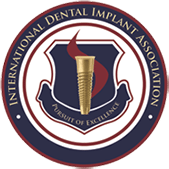 Ordinarily, our jaw bones are only as large and strong as they are because we use them all the time. Once teeth are lost and we stop applying force to the jawbone, however, the bone mass gradually diminishes until all that’s left is a small, narrow ridge of bone.
Ordinarily, our jaw bones are only as large and strong as they are because we use them all the time. Once teeth are lost and we stop applying force to the jawbone, however, the bone mass gradually diminishes until all that’s left is a small, narrow ridge of bone.
This can make it difficult, if not impossible, to install dental implantsor fit patients with dentures. This is why dentists will sometimes perform ridge preservation or dental bone graft procedures, after teeth are lost.
During a ridge preservation procedure, a dentist will reinforce the jawbone with bone material from a cow so that there is adequate support for replacement teeth. Bone grafts might sound scary and unpleasant, but these procedures are actually fairly routine and entirely painless.
First, Let’s Start With Some Background
Dental bone grafts weren’t always quite as straightforward as they are today. Years ago, oral surgeons would actually take bone material from a patient’s ribs to use for ridge preservation procedures. In some cases, they’d even take skin grafts from the patient’s thigh to further rebuild the gum line. These days, the process is far less invasive.
Nowadays, dentists will use processed allograft transplants as a primary dental bone graft material. An allograft is simply tissue material from a human donor. The raw mineral content of the bone is harvested, sterilized, and shaped to reconstruct your jaw bone. At first the bone graft requires mechanical support to keep it in place, but over time it will fuse with the jaw and become one solid piece of bone.
So how is dental bone graftingperformed? They typically fall into three different categories,all of which are outpatient procedures.
Socket Grafts
This type of ridge preservation is usually performed after a single tooth has been pulled. Its purpose is to preserve the integrity of the jawbone where the tooth was removed until an implant or dental bridge can be installed.
In a socket graft, a small amount of bone material is inserted into the hole left by the missing tooth, and thensealed with collagen and a few sutures. This is a small-scale type of ridge preservation.
Sinus Lift Procedure
Because the maxillary sinus is in very close proximity to your top teeth, dentists must take care not to disturb it during upper bone graft procedures. During a sinus lift (which is typically performed fordental implants), a dentist will create a small opening between the sinus and jaw ridge to allow room for the bone graft. This opening does not disturb the sinus, and allows the graft to be applied without interfering with the sinus cavity.
Block Bone Graft
This type of dental bone graft is only performed when there has beensevere degradation of a large part of the jaw. This tends to happen in cases whereteeth have been missing for many years, or where teeth were lost as a result of dental trauma.
In these cases, the allograft may not provide enough mass to adequately restore the jaw. Instead, dentists will take a small “block” of bone from another part of the jaw to use as a graft. A layer of the allograft is then applied over the ridge of the jaw for added support and structure. Finally, a collagen membrane is used to seal the graft site.
Ridge preservations are valuable procedures that allow patients to maintain the integrity of their jaw bones so that teeth can be replaced in the future. Ideally, ridge preservation should be performed as soon as teeth are lost. This will minimize the amount of bone matter needed to preserve the jaw until the teeth are replaced.
Want to learn more about this or any of thedental services we perform at Modern Family Dental Care in the Charlotte area?Give us a call today to schedule a consultation. We look forward to hearing from you!






